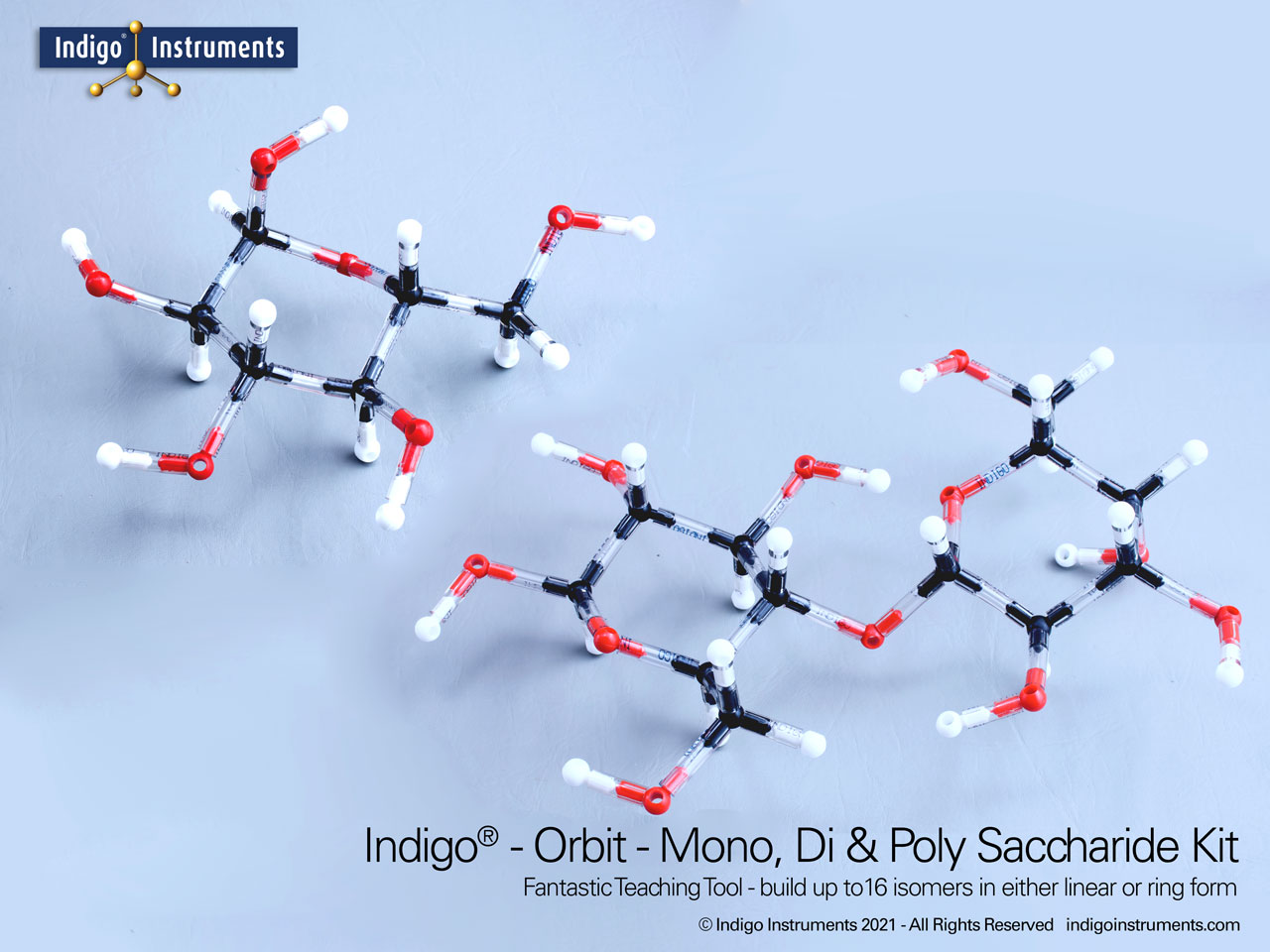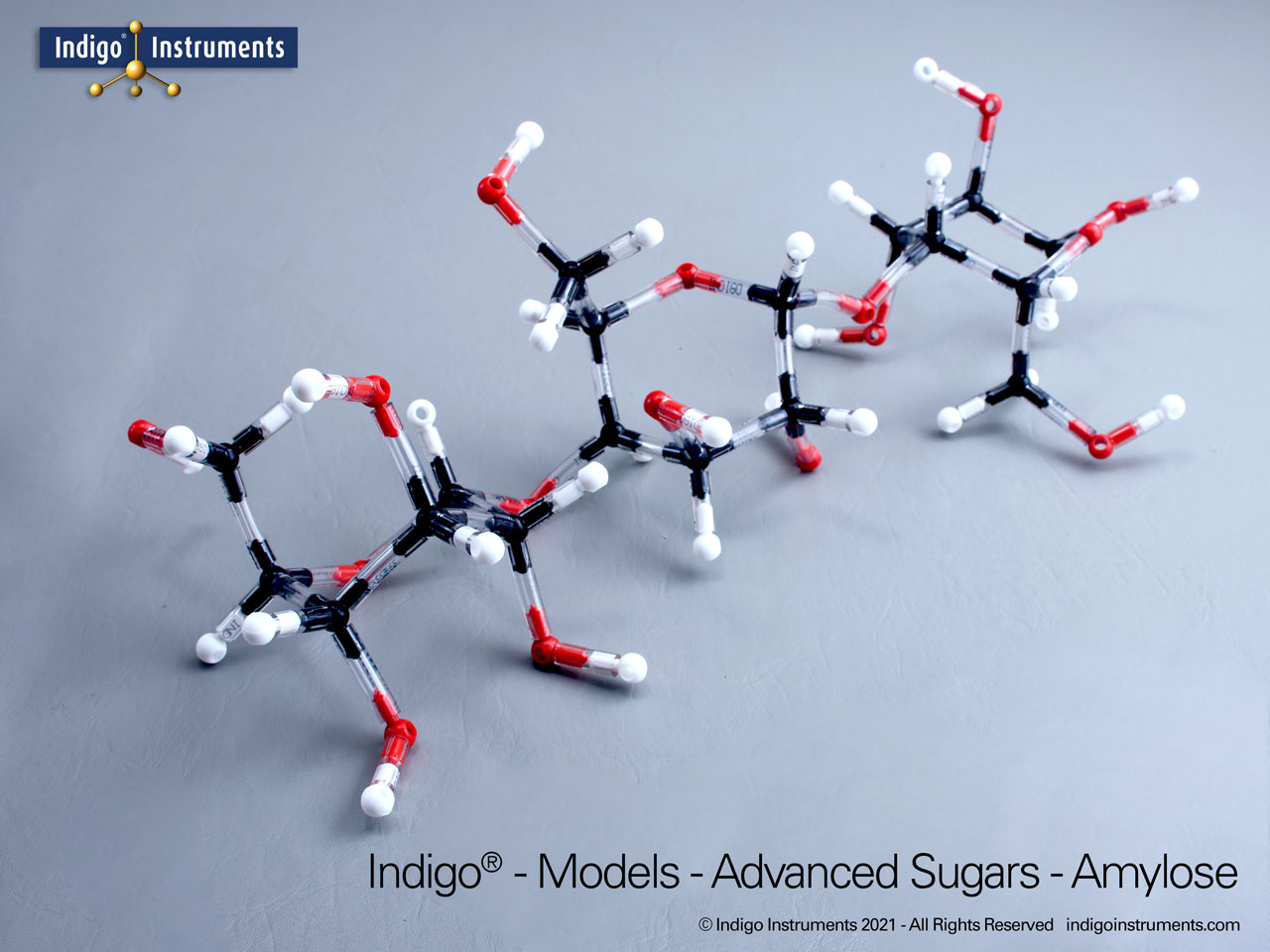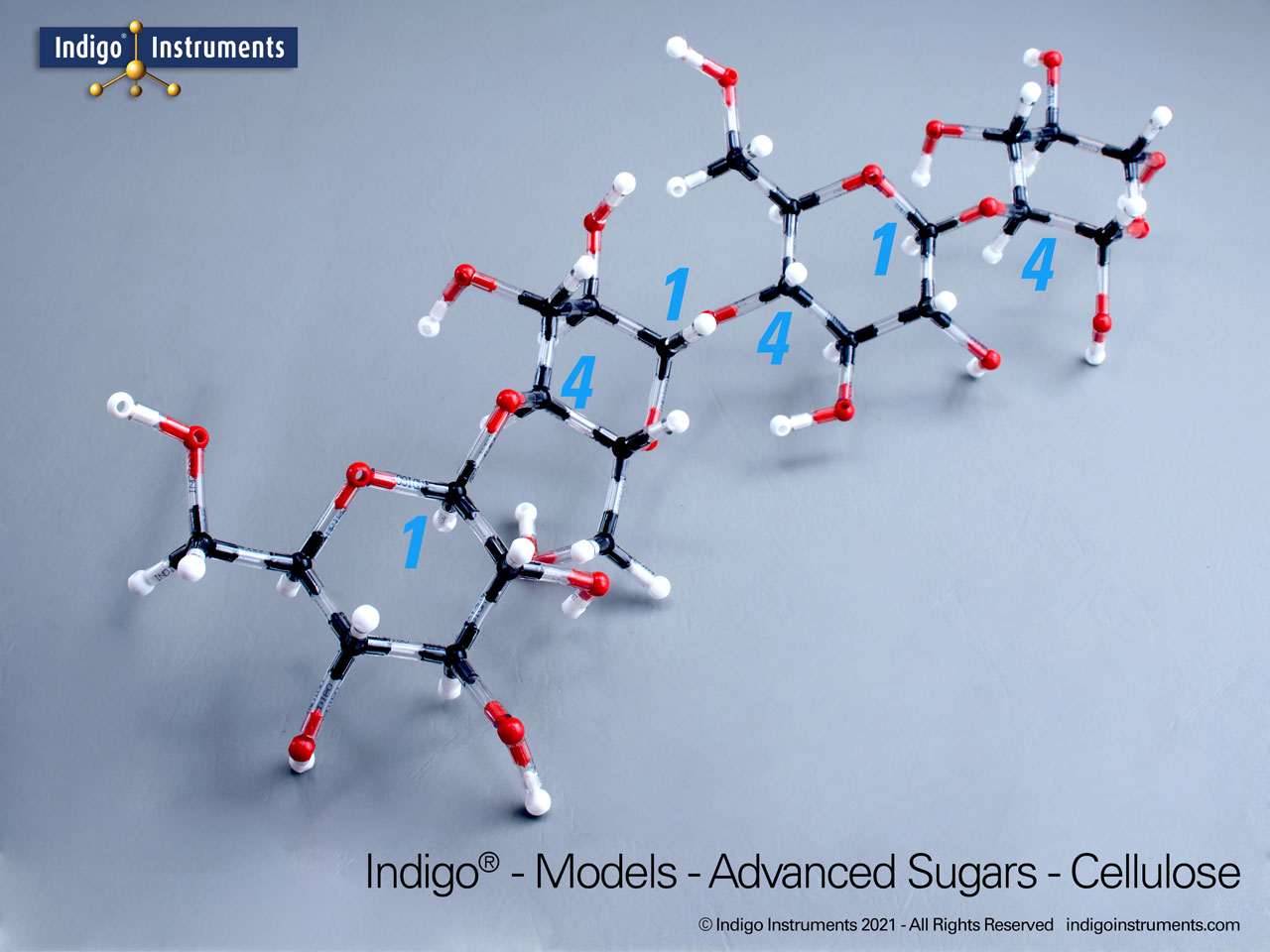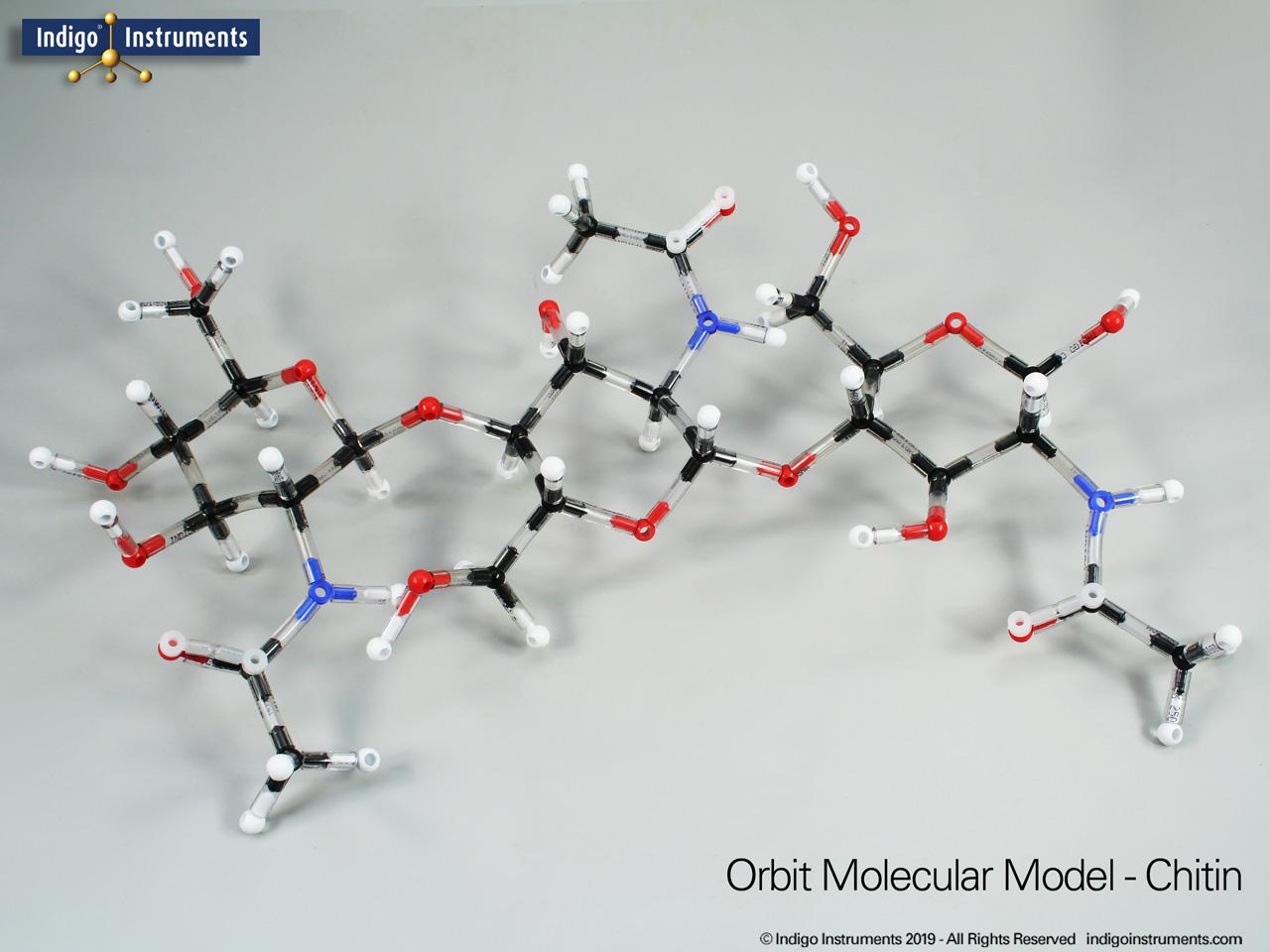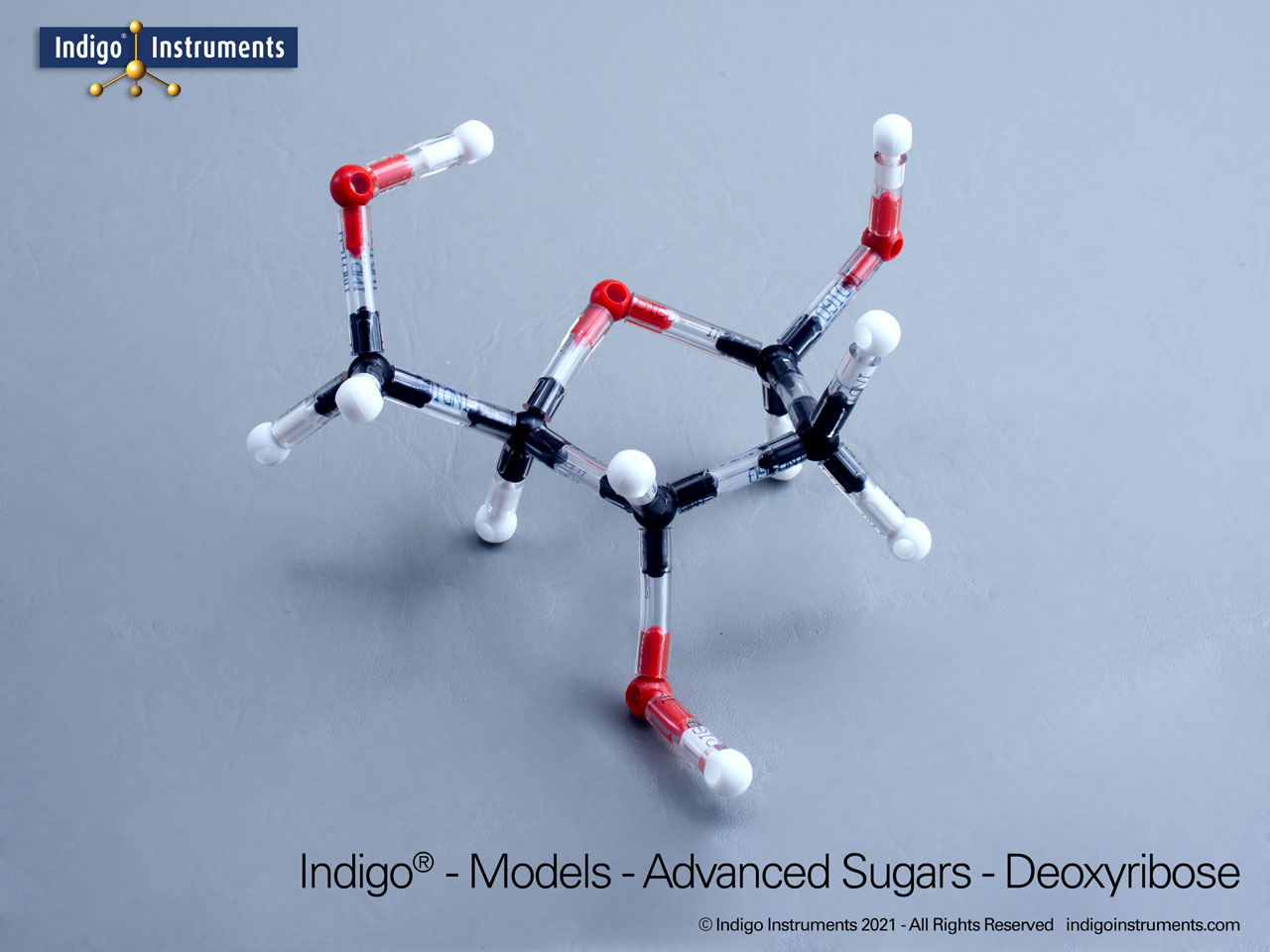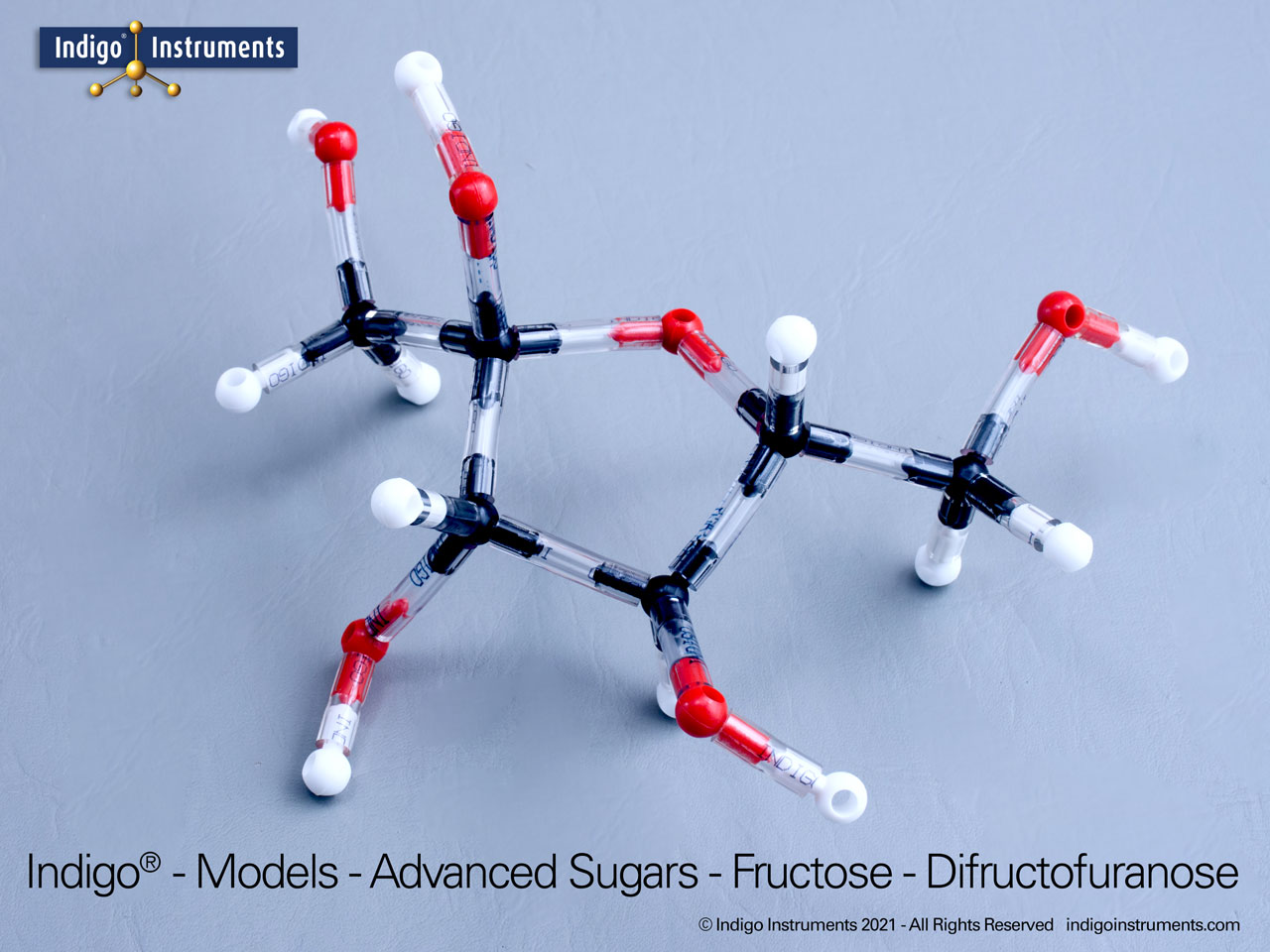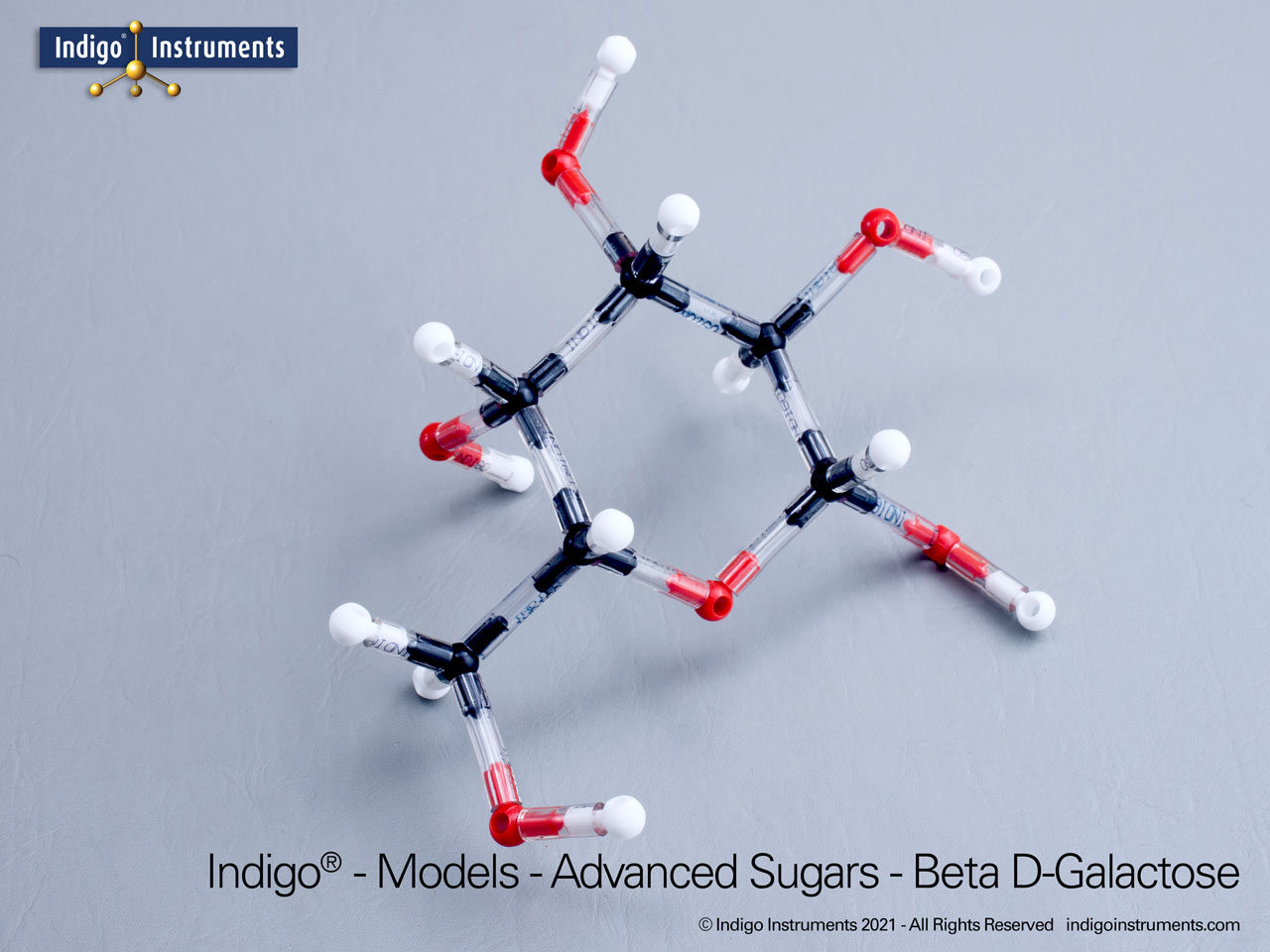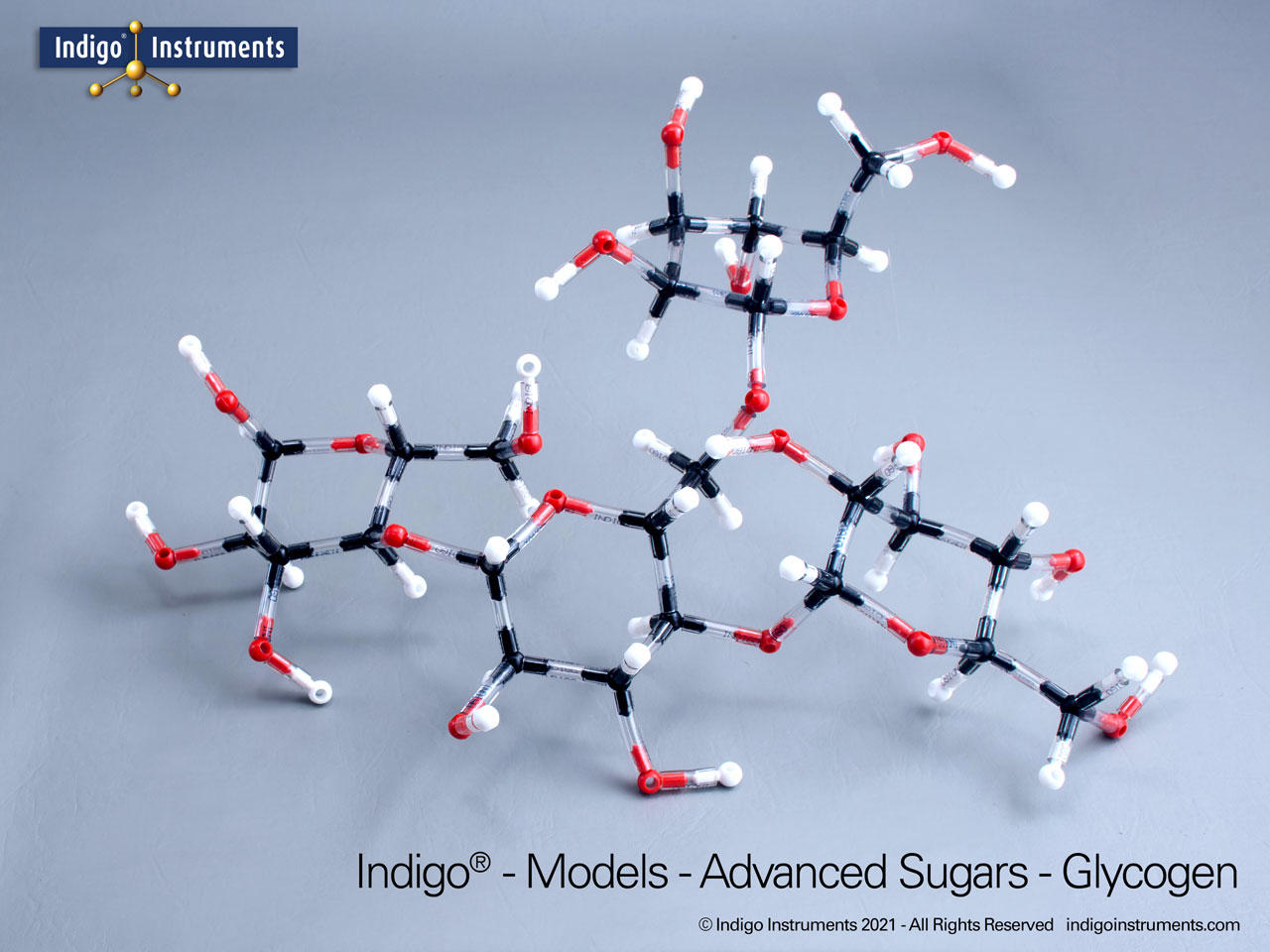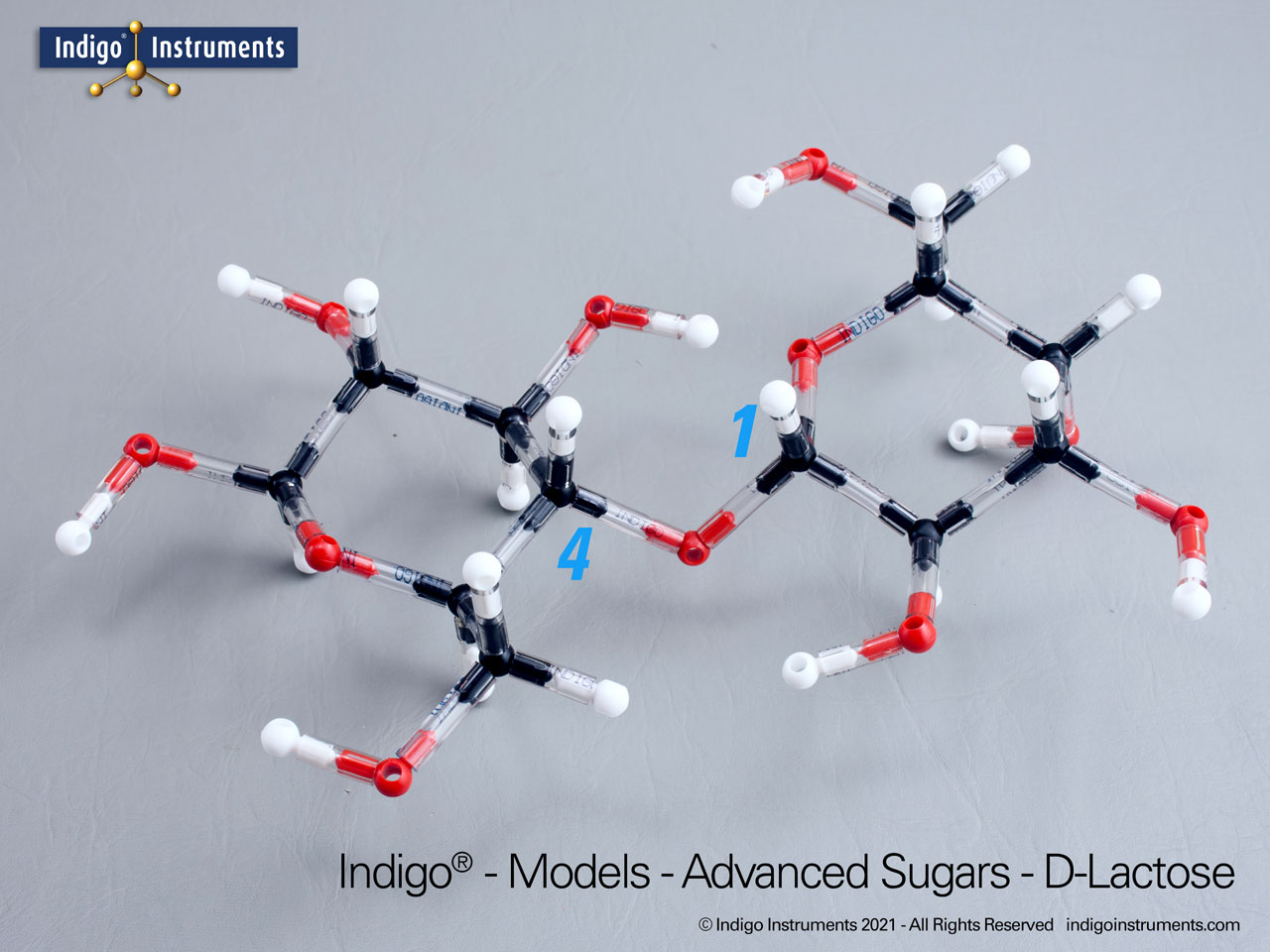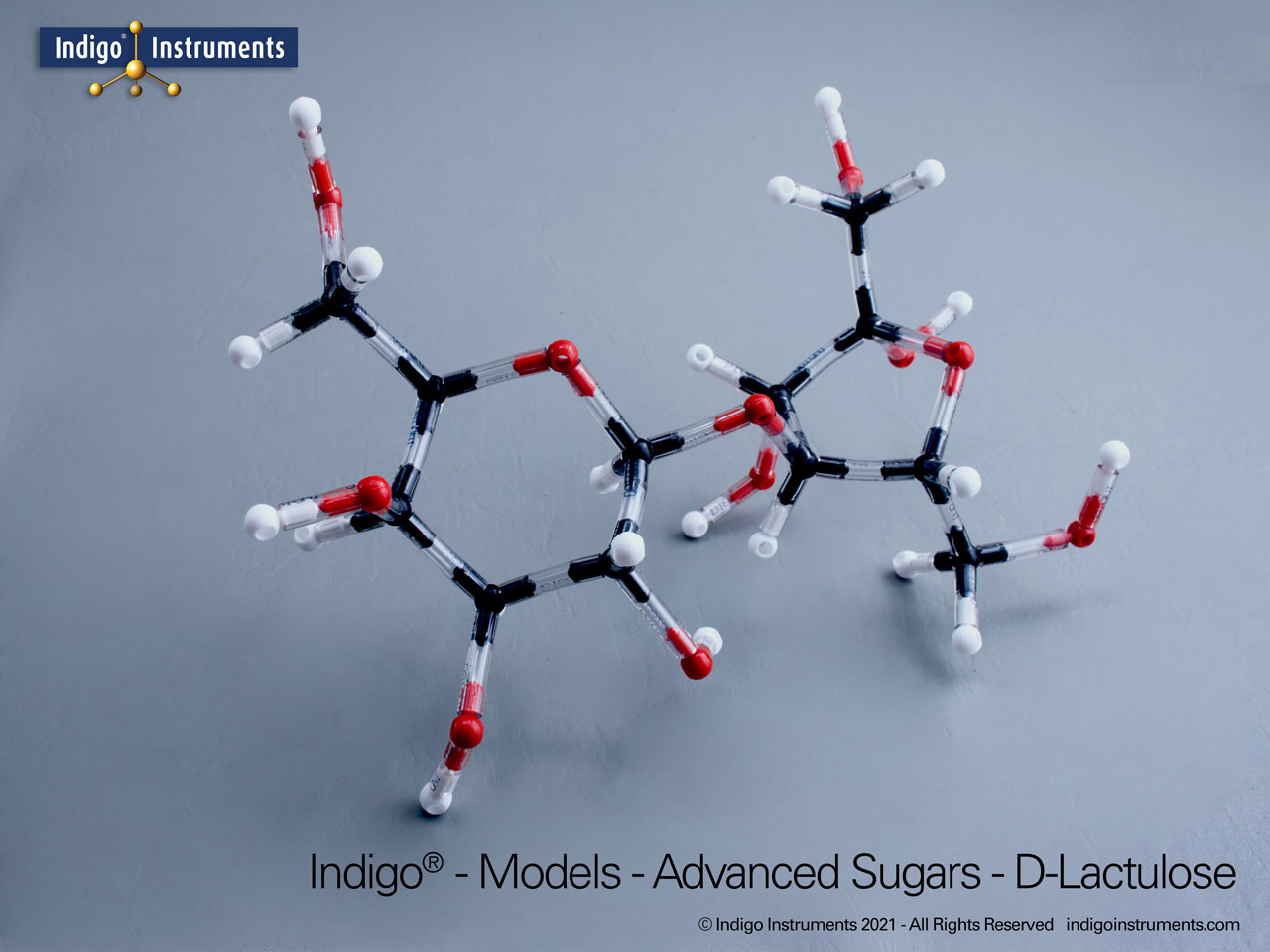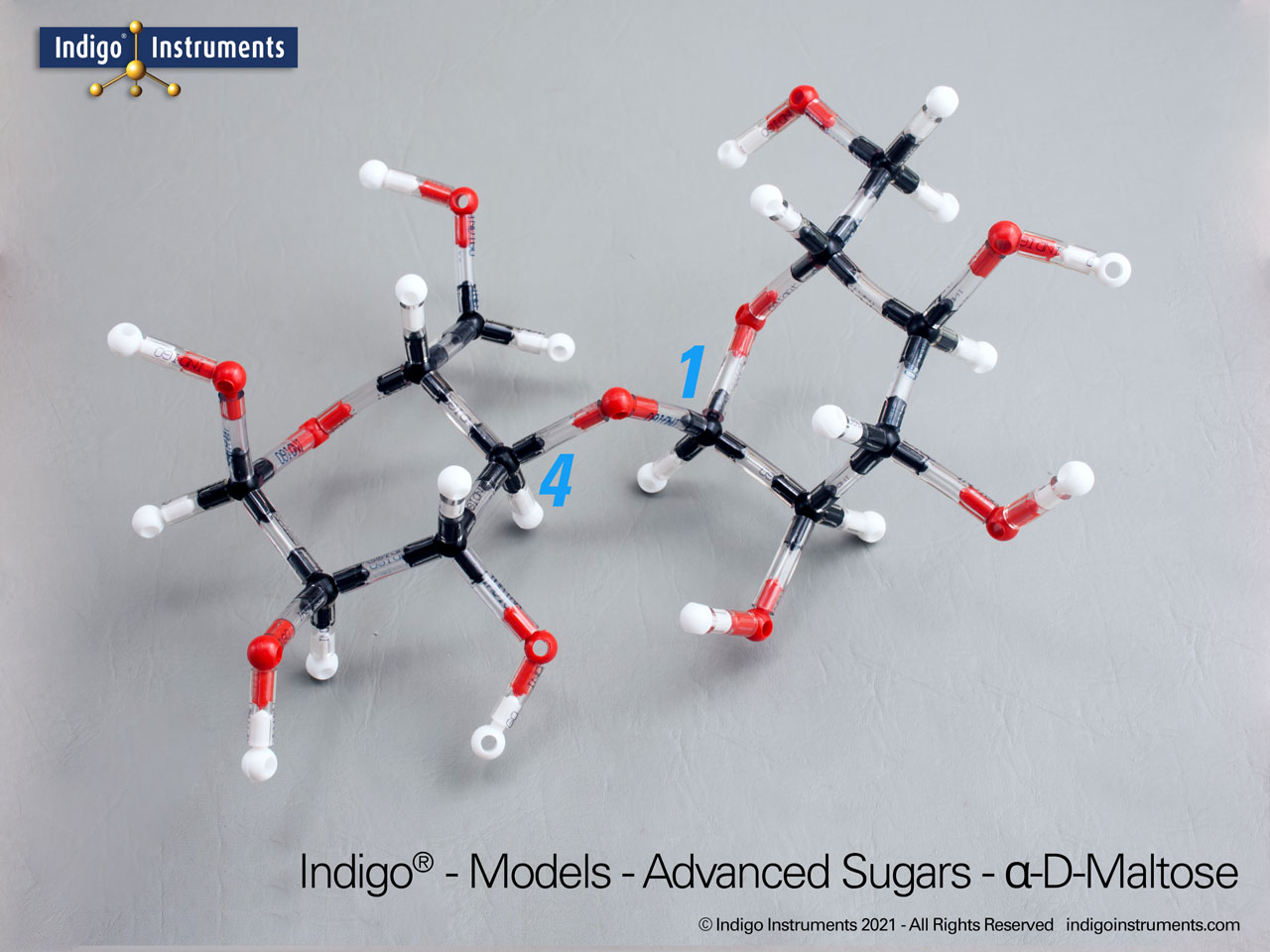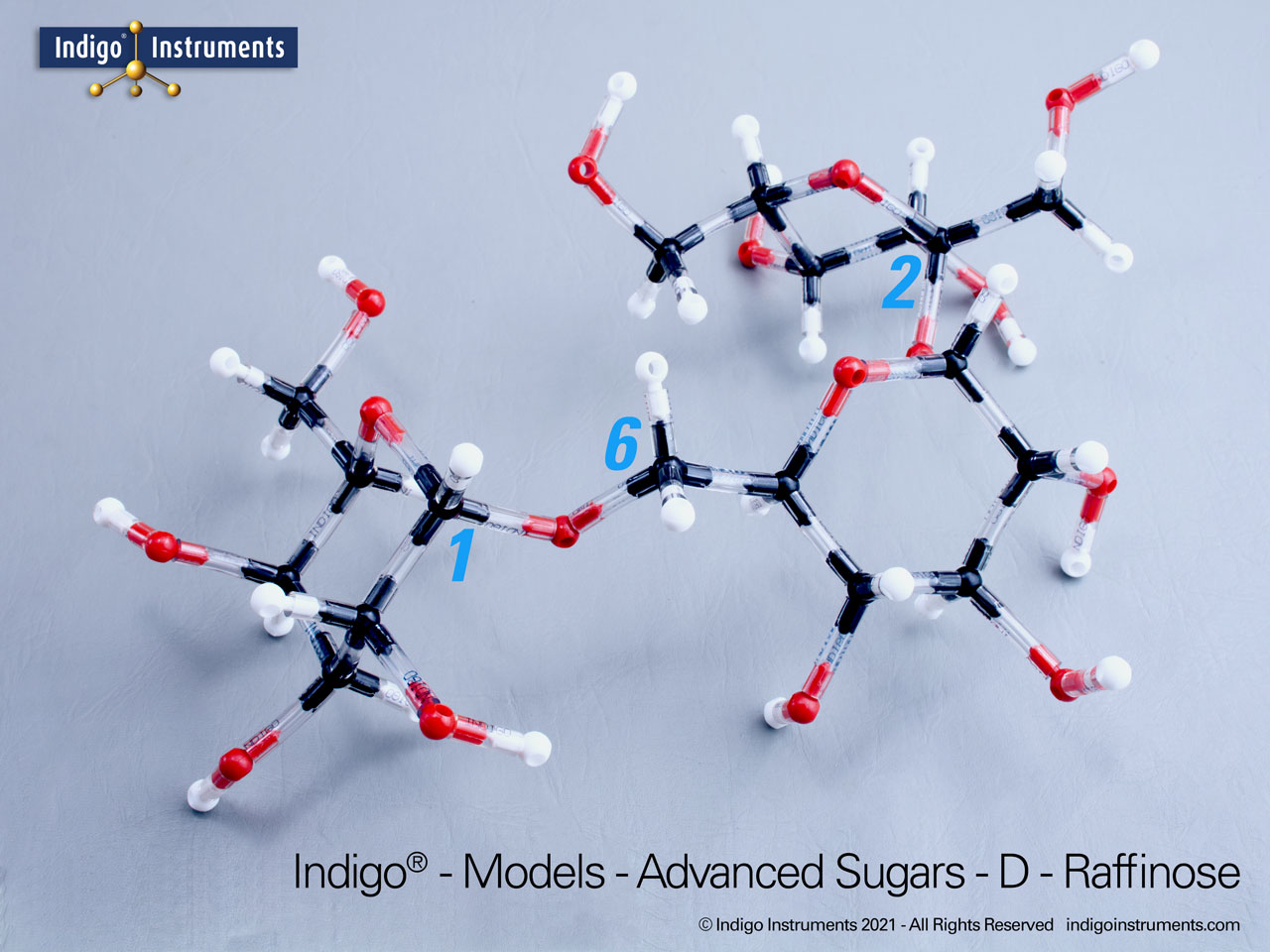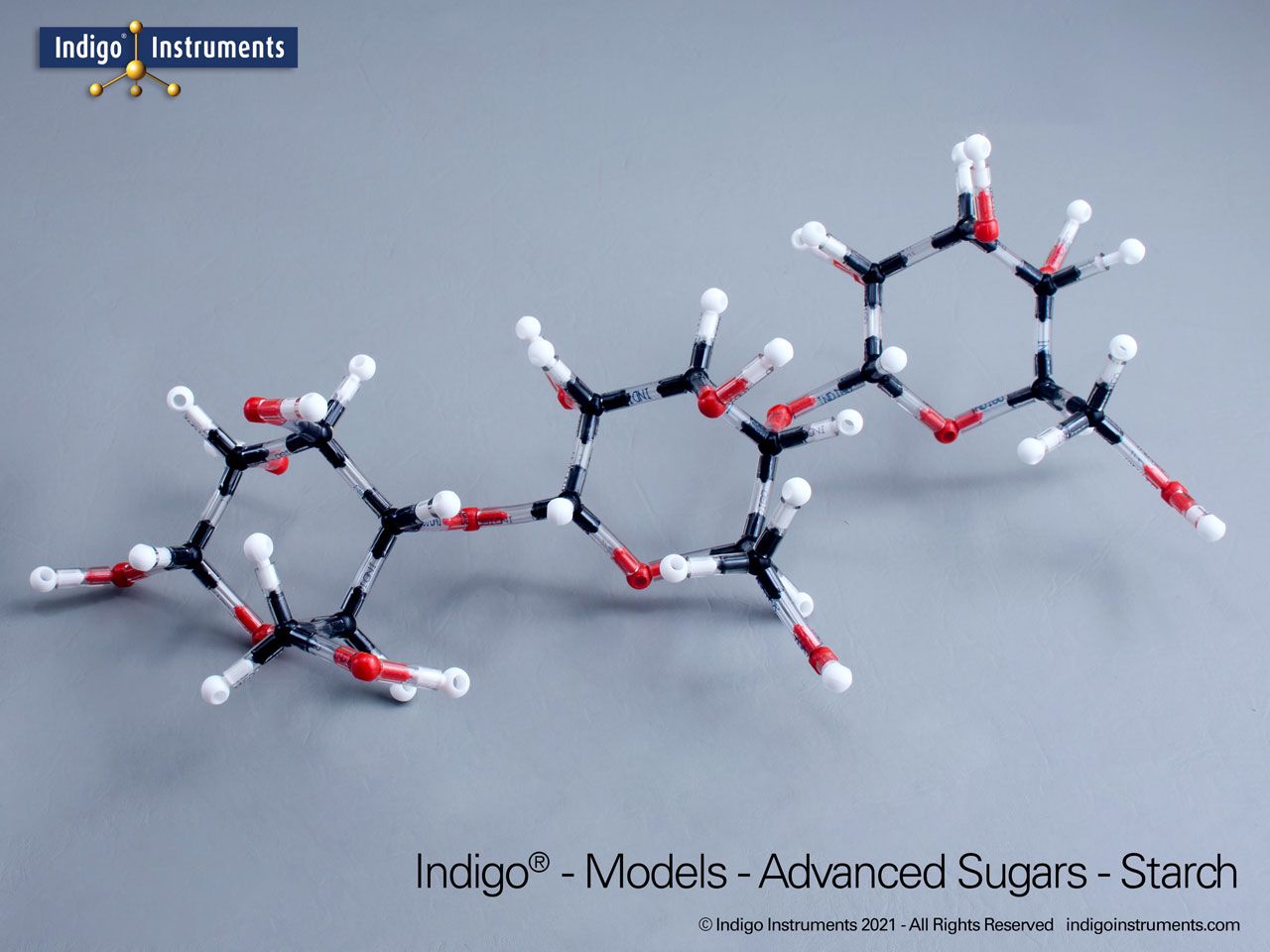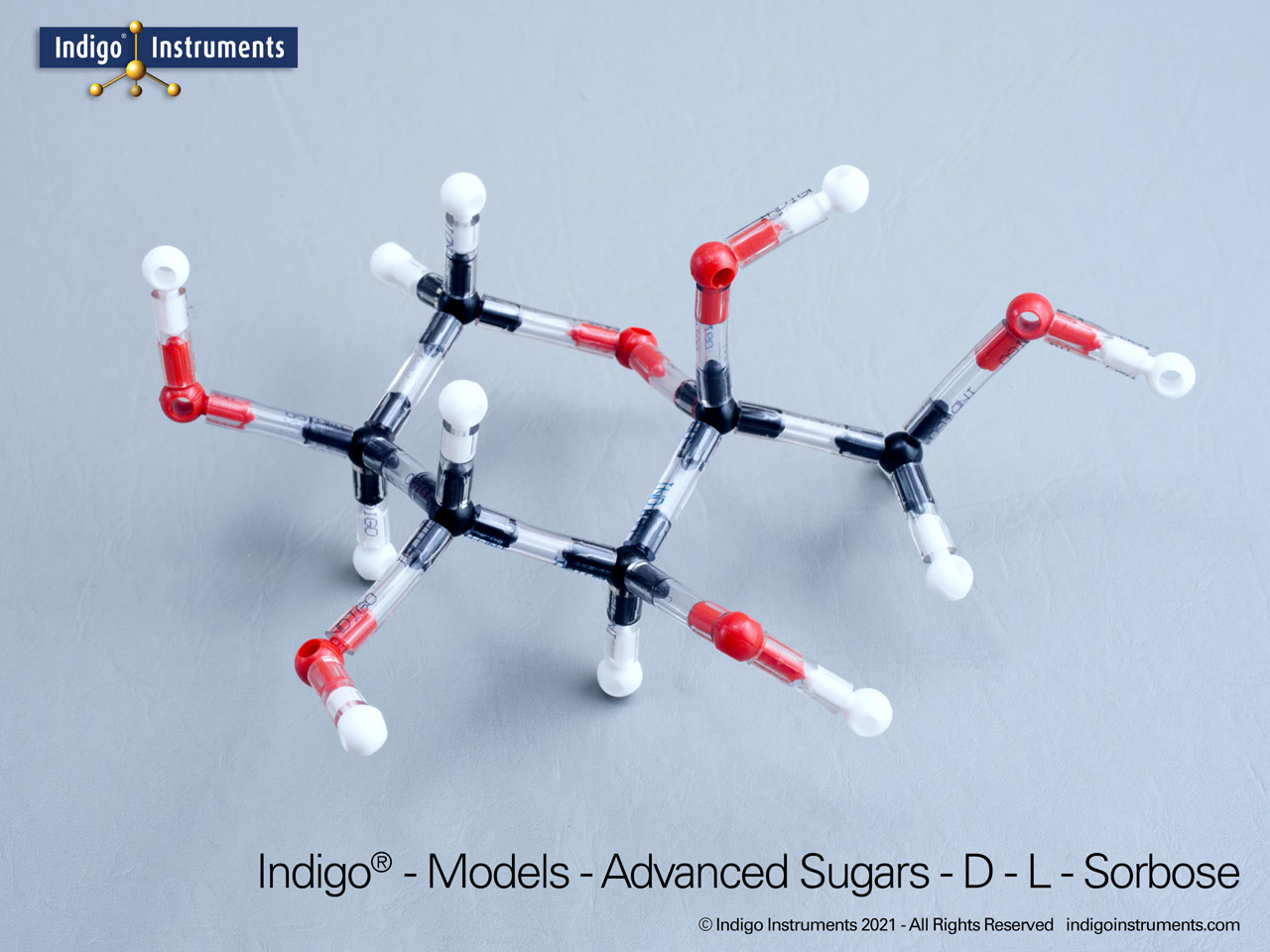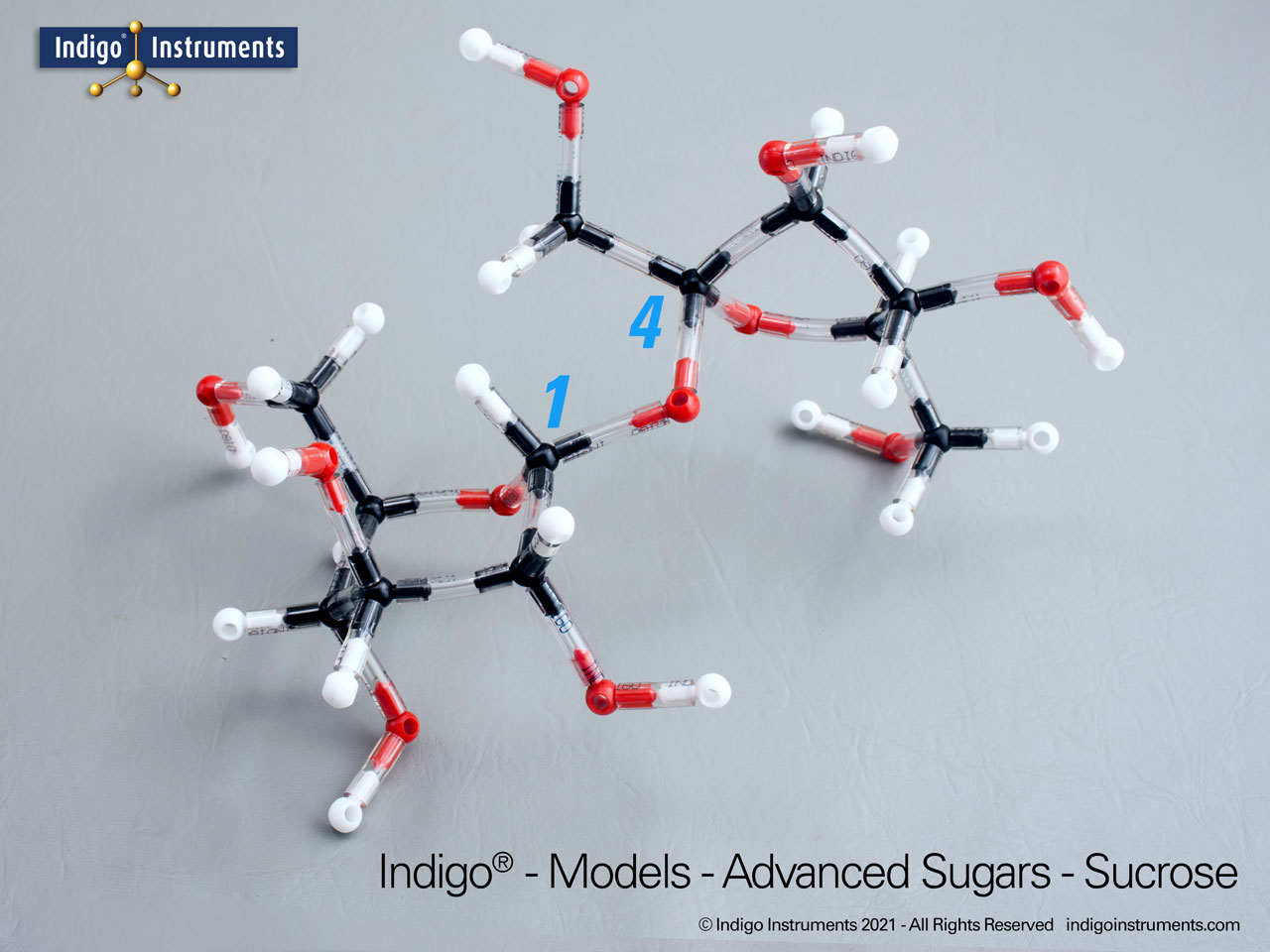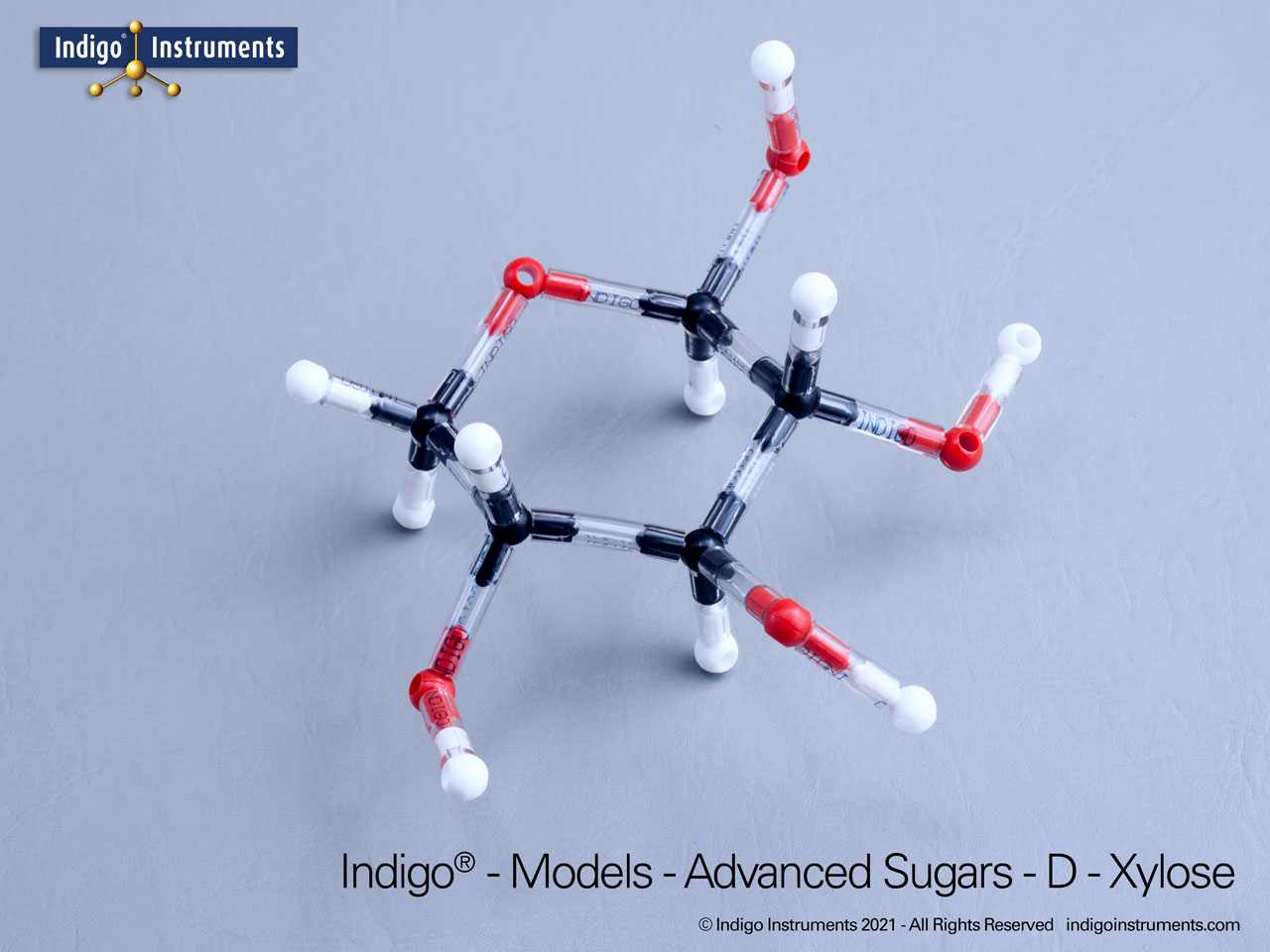D-Glucose Furanose Molecule Structure
SKU: 68799W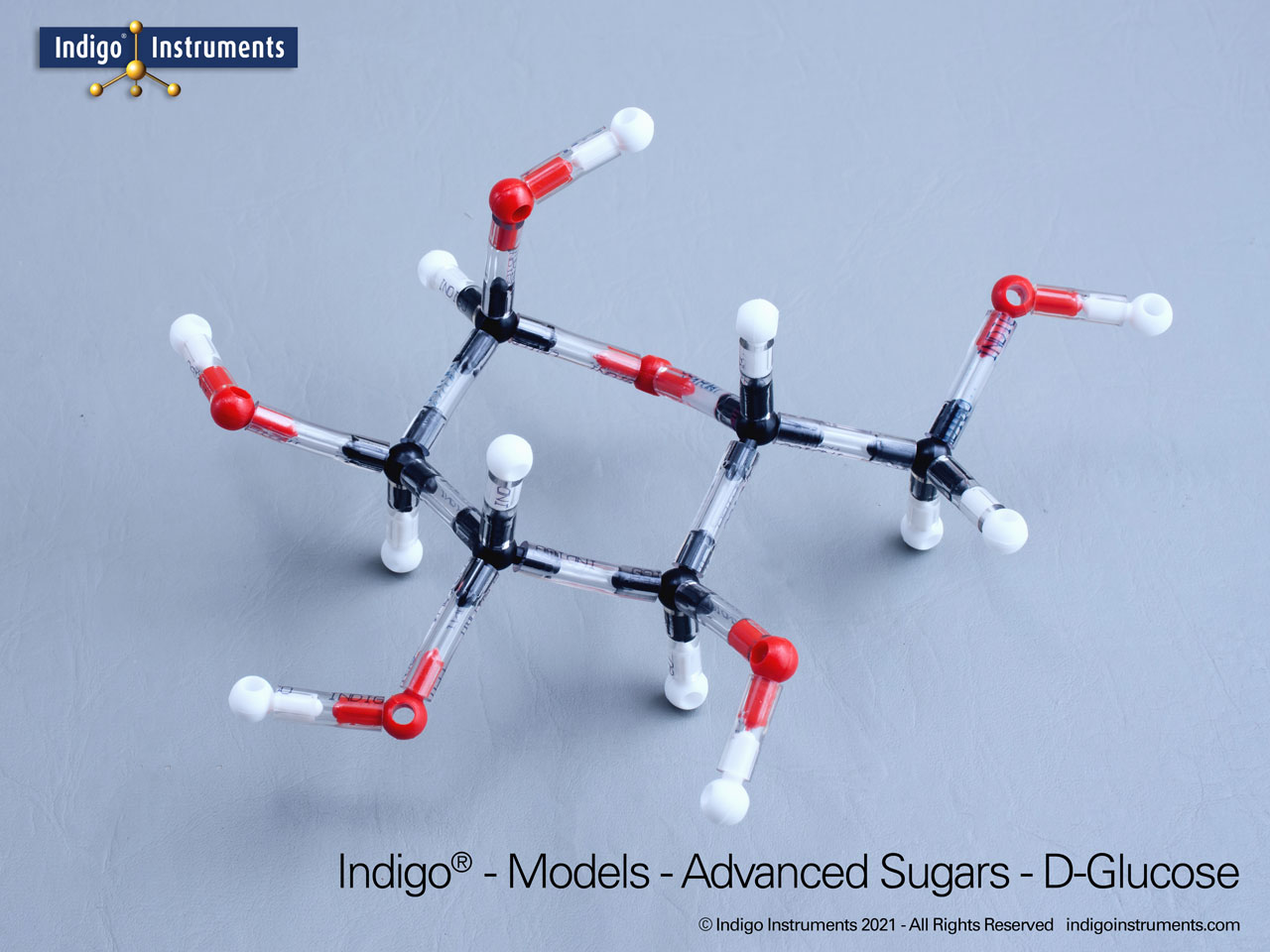
Glucose, chemical formula C6H12O6, is the single most important carbohydrate & is produced in plants from carbon dioxide and water using sunlight as the energy source. It is the basic subunit of polysaccharides such as cellulose, starch & glycogen. Its linear form, D-glucose, has a carbonyl group at C1, forming an aldehyde, 6 carbon aldohexose reducing sugar. In humans and other mammals it occurs mainly in cyclic form as beta-D-glucopyranose (as shown in the image).
You can use our 3D Molecular Model Builder to illustrate glucose in any of its 5 forms. First choose the model style: "Orbit-flexible". Then choose which structure you want to view/build. Simply enter D-glucose or dextrose for the linear molecule, note the carbonyl at carbon 6. Enter alpha-d-glucopyranose or beta-d-glucopyranose to view 6 member rings; alpha-d-glucofuranose or beta-d-glucofuranose for 5 member rings.
Indigo Instruments has maintained a substantial inventory of genuine Cochranes of Oxford (Orbit) parts for 30+ years (scroll down to see "Skeletal (Orbit/Minit) and are compatible with every molecular model kit we have sold since day 1. This level of quality may appear expensive but no parts support from other vendors costs even more.
